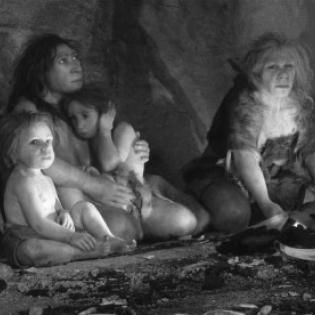Piecing Together the History of Philanthropy
Youth explore the history of philanthropic behavior (sharing, community collaboration, service) in ancient cultures and today, as well as compare themes of love and service in different world religious practices.
Learners will be able to
- explore the role philanthropy has played in history.
- handouts for groups 1-5 with links to videos
- copies of the graphic organizers for each learner
- optional copies of Golden Rule handout
- philanthropy: the giving of one's time, talent or treasure for the sake of another, or for the common good
- golden rule: a basic principle that should be followed to ensure success in general or in a particular activity; i.e., treat others how you wish to be treated
Instructions
Discuss and define philanthropy as giving time, talent, or treasure and taking action for the common good. Ask “What are some examples from history of people working together and helping their neighbors for the good of all?”
In the study of history, one can observe philanthropy embedded in the very nature of humanity. This belief that the world around us can be made better stretches back thousands of years. Philanthropy, from the Greek root meaning 'love of mankind,' comes naturally to us, and is motivated by a number of different reasons. Below are video clips describing philanthropy of different historical times and perspectives.
The learners form groups to each learn a piece of philanthropic history and share their learnings to get a snapshot of the embedded practice throughout time and in different parts of the world.
This is written for 28 learners and may be adjusted for other size groups to learn parts. They learn and share facts about their time period or perspective using readings and videos.
- Group 1 – “The Ancient World” (7 learners)
- Group 2 – “Western Religions” (3 learners)
- Group 3 – “Eastern Religions” (6 learners)
- Group 4 – “American Revolution” (2 learners)
- Group 5 – “Civil Rights Movement” (4 learners)
- Group 6 – “Women’s Rights Movement” (6 learners)
One individual from each group shares their findings from their research and they all add it to the graphic organizer on the handout. When all six groups have presented, they discuss the similarities and connections to their own lives.
Handouts
Philanthropy Framework
-
Strand PHIL.I Definitions of Philanthropy
-
Standard DP 01. Define Philanthropy
-
Benchmark HS.1 Define philanthropy to include giving and sharing; volunteering; and private individual action intended for the common good. Explain how a volunteer individual/group can act for the common good.
-
-
-
Strand PHIL.II Philanthropy and Civil Society
-
Standard PCS 01. Self, citizenship, and society
-
Benchmark HS.2 Discuss and give examples of why some humans will sacrifice for the benefit of unknown others.
-
Benchmark HS.5 Describe civil society advocacy organizations and their relationship to human rights.
-
-
Standard PCS 02. Diverse Cultures
-
Benchmark HS.1 Analyze philanthropic traditions of diverse cultural groups and their contributions to civil society.
-
Benchmark HS.2 Give examples from history of how intolerance of ideas, religion, and minorities contributed to social disintegration.
-
Benchmark HS.5 Describe how women and minority groups have used the civil society sector as an alternative power structure.
-
-
